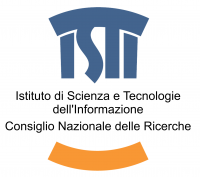József Laszlovszky
Advanced 3D modelling for accessing and understanding cultural heritage is one of the most important issues in the recent developments of digital technologies in the field of archaeological and built heritage. The technical aspect of the session proposal is to research, collect and discuss 3D imaging technologies, explore the forms and ways this technology can be cost-effectively implemented in the fields of archaeology and monument protection. One of the key issues of the proposal is the recent rapid development of 3D scanning (objects, archaeological sites, buildings).
This documentation format is a true, physically detached, virtual representation of the original object, most suitable to be kept for forever, shared to everybody and accessible from everywhere. At the same time, this technology raises a number of issues both in the field of humanities (archaeology, art history, etc.) and in the digital world. Although 3D scanning provides information about the shape, appearance and conservation condition of the object, its digital representation inhibits much more versatile application possibilities than just precisely and retrievably documenting its momentary conditions. 3D scanning combined with virtual 3D modelling can visualize different completion phases or decay stages of objects or monuments (buildings, archaeological sites, landscapes etc.), recreating their virtual history, and the relevant transformation processes.
The creation of high quality 3D models is still very time-consuming and expensive exercise, not least because the modelling is carried out for individual objects rather than for entire collections. One of the expected output of the session is to formulate ideas and present methods verified by practice allowing the researchers to cost-efficiently avail themselves of the 3D scanning technologies without sacrifices in quality (resolution or preciseness). Today the outcome of digital reconstructions is frequently provided in formats that are not interoperable, and therefore cannot be easily accessed by scholars or curators. This presents a risk to the sustainability of the reconstructions. Therefore, an important objective of the session proposal is to present ongoing research and soft-ware development in the context of further formats to enable easy exchange, publishing and use of 3D models that have been acquired or generated by a wide range of devices.
The proposed session goes beyond current levels of 3D representations, visual depicting of objects, and plans to discuss information integration/linking and shape-related analysis. Furthermore new forms of presenting cultural heritage are also based on these new technologies. While the complex models are intended for scientific research use, the lower quality models can be used for educational and entertainment purpose displays.
Augmented reality (AR) solutions, for example, provide enhanced audio-visual experience by communicating rich narratives about the past.


